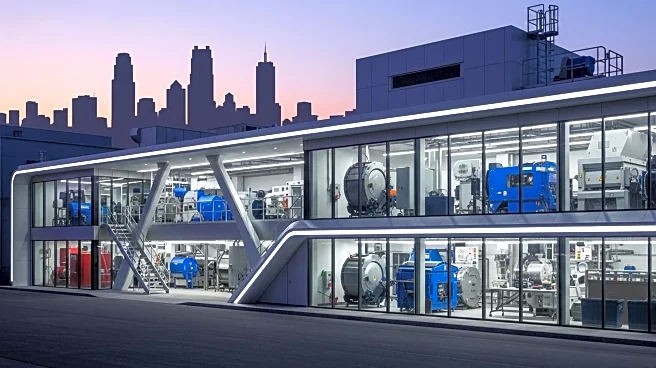What's Happening?
McLaughlin & Harvey has been awarded a £33 million contract to construct a waste transfer station in north-west London, as part of the Brent Cross Cricklewood regeneration initiative. The facility, located on Geron Way, will cover 9,000 square meters and is set to begin construction later this month. The project is commissioned by the North London Waste Authority (NLWA) with the London Borough of Barnet as the client. McAdam Design is responsible for the architectural plans, which include piled foundations, a steel-frame superstructure, and external landscaping. The facility aims to achieve a BREEAM Very Good rating, incorporating features to reduce noise and odor, alongside living roofs to boost biodiversity.
Why It's Important?
This development is significant as it supports the sustainability and biodiversity goals of Barnet Council, according to Councillor Alan Schneiderman. The new waste transfer station is expected to minimize the impact of waste operations on local residents, enhancing the quality of life in the area. The Brent Cross Cricklewood regeneration program, one of London's largest, spans 151 hectares and includes housing, retail, and infrastructure projects. The involvement of McLaughlin & Harvey underscores the firm's expertise in delivering major infrastructure projects in London and the South East, potentially setting a precedent for future urban development projects focused on environmental sustainability.
What's Next?
Construction is scheduled to commence later this month, with McLaughlin & Harvey leading the project. The facility will handle waste and recycling for Barnet and six other boroughs, contributing to the broader regeneration efforts in the area. As the project progresses, stakeholders including local residents, environmental groups, and government bodies will likely monitor its impact on sustainability and community well-being. The successful completion of this project could influence future urban planning and waste management strategies in London.
Beyond the Headlines
The project highlights the growing emphasis on sustainable urban development, integrating environmental considerations into infrastructure planning. The use of living roofs and noise reduction measures reflects a shift towards eco-friendly construction practices. This approach may inspire similar initiatives across the UK, promoting biodiversity and reducing the ecological footprint of urban areas.












